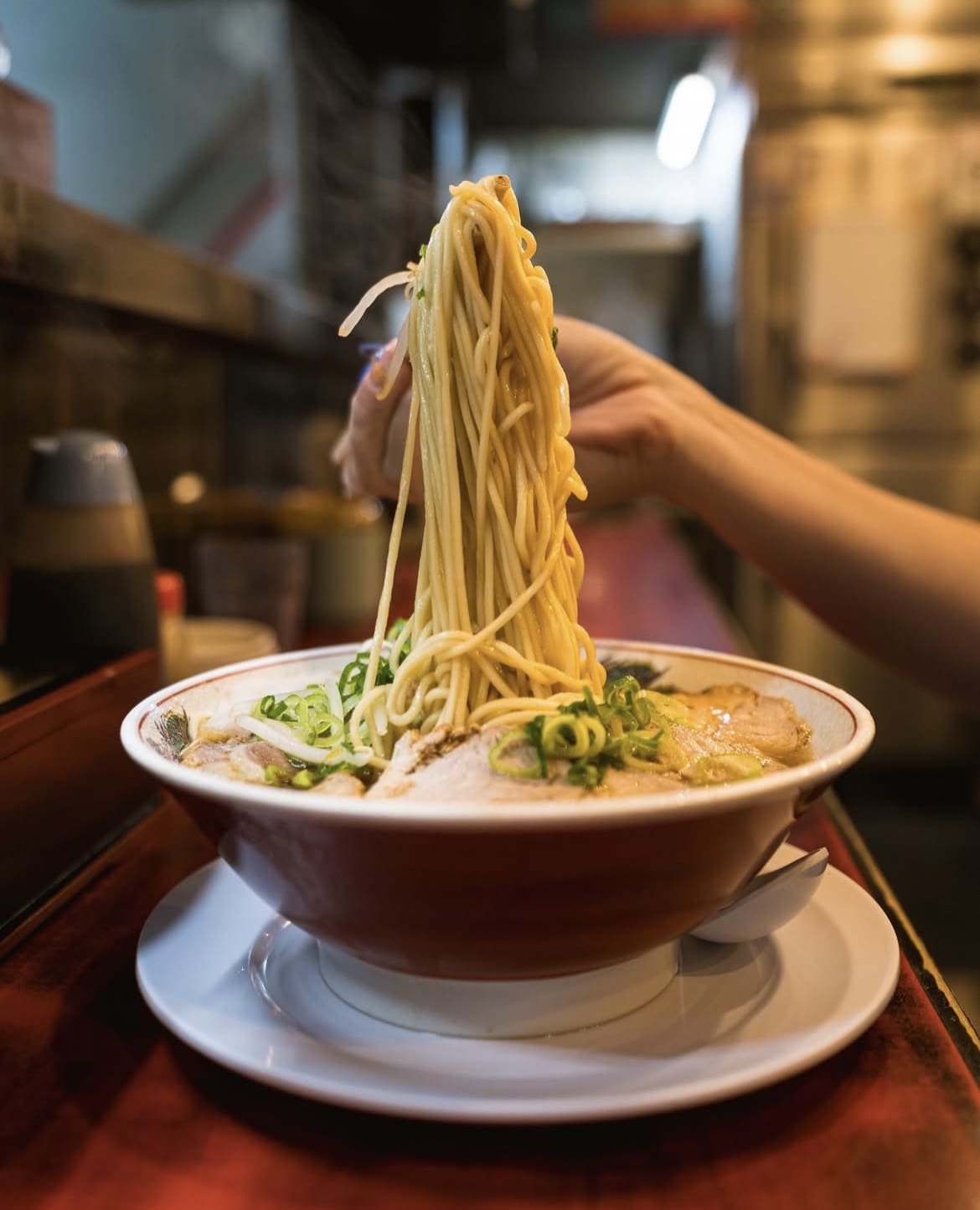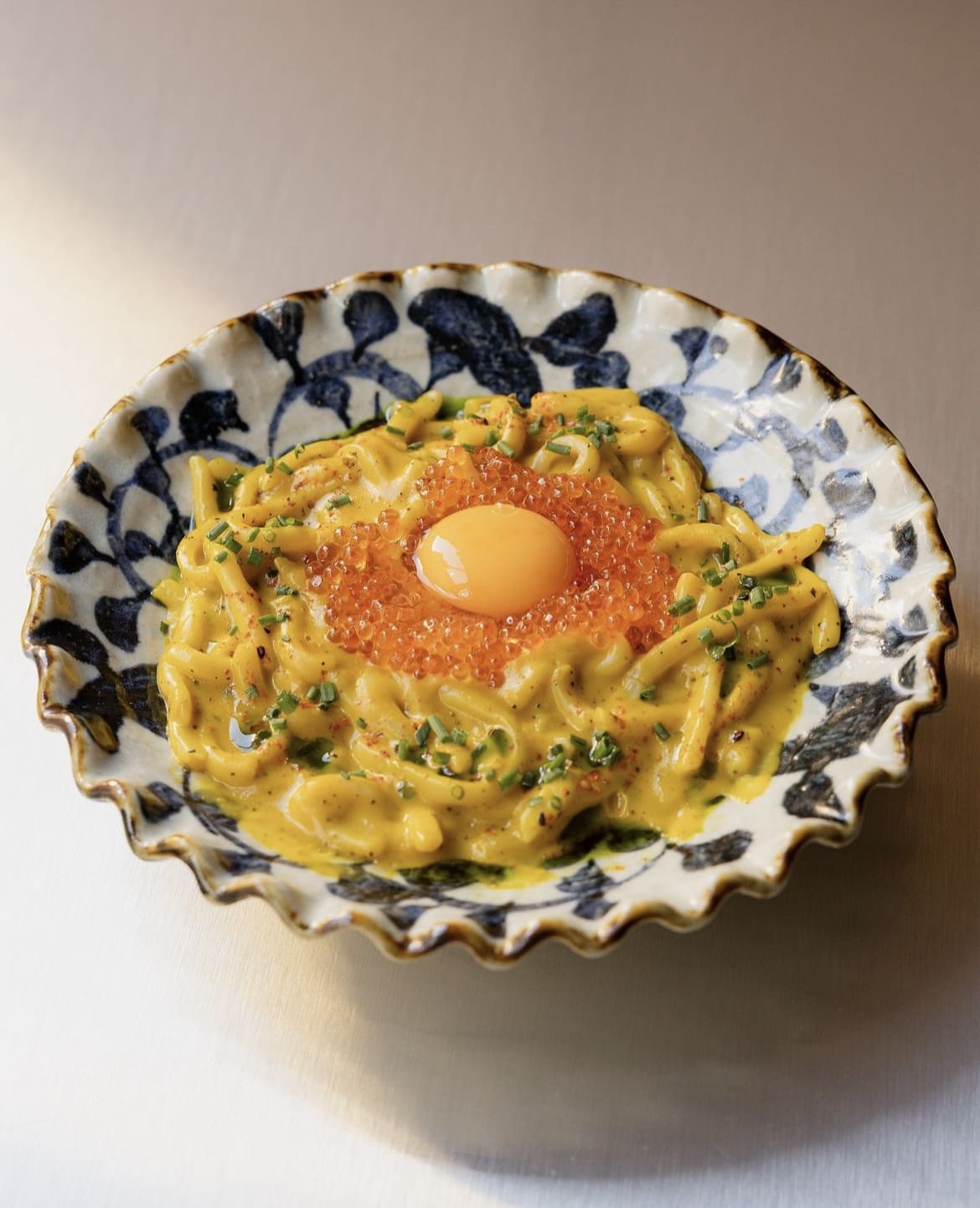Picture this: It’s freezing outside, the kind of cold that bites through your jacket. You’re wandering the streets of Hokkaido or Tokyo, your breath fogging in the crisp air. Suddenly, the aroma of steaming crab, sizzling nabe, or a sweet roasted yakiimo hits you. That’s the magic of winter in Japan—a culinary wonderland designed to warm your body and soul.
Winter isn’t just about snowy landscapes or soaking in hot springs; it’s also the perfect time to dive into Japan’s incredible seasonal cuisine. Whether you’re cozying up in a local izakaya or grabbing a snack from a street vendor, winter foods in Japan are the ultimate way to experience the culture, one delicious bite at a time.
Here are our 12 favourite winter delicacies:
1. Crab (Kani): The Winter King of Seafood
When it comes to winter foods crab is royalty. Think plump snow crab legs dipped in butter or freshly grilled crab claws that burst with ocean flavor. Japan takes its crab game seriously, and winter is when it’s at its peak.
Head to Hokkaido or the Hokuriku region to experience the best. Kanazawa’s Omicho Market is a must-visit, offering everything from live crab to crab-filled croquettes you can eat while you browse. Fancy something more upscale?
Book a table at a crab specialty restaurant where prices range from ¥3,000 to ¥10,000, depending on your appetite for decadence.
Pro Tip: If you’re around during the Echizen Crab Festival in Fukui Prefecture, don’t miss it. It’s basically heaven for crab lovers.

2. Nabe: The Hot Pot that Brings People Together
Few things scream winter comfort like a bubbling pot of nabe. This communal dish features a pot of simmering broth filled with a mix of meat, seafood, and fresh vegetables. It’s warm, it’s hearty, and it’s the perfect excuse to gather around the table with friends.
Nabe isn’t just one dish; it’s a whole vibe. You’ll find variations like soy milk nabe (creamy and mild), kimchi nabe (spicy and tangy), or classic miso-based nabe. Tokyo is packed with izakayas where you can try it, or you can DIY it at home with fresh ingredients from a local market.
Expect to pay around ¥2,500–¥4,000 per person at most restaurants, but the experience? Priceless.
Pro Tip: Nabe doesn’t just warm your belly—it warms your spirit. Share it with good company, and you’ll understand why it’s a staple among winter foods in Japan.

3. Oden: Convenience Store Gold
Who would’ve thought one of the best Japanese winter foods could be found in a convenience store? Oden is the ultimate grab-and-go winter snack. Picture a light soy-based broth filled with goodies like daikon radish, fish cakes, and konjac simmered to perfection.
You’ll spot oden setups everywhere in winter, from specialty shops to 7-Eleven counters. It’s cheap (around ¥100 per piece) and ridiculously satisfying. If you’re in Kanazawa, don’t skip their unique oden, which often features local seafood for an added twist.
Pro Tip: Order a mix of ingredients to discover your favorites, and don’t forget to pair it with a hot drink for maximum coziness.

4. Fugu: The Risky Delicacy
Feeling bold? Then fugu, or pufferfish, should be on your bucket list. Known for its delicate flavor and high-stakes reputation, fugu is one of those dishes that’s as much about the experience as the taste.
Served as sashimi or cooked in hot pots, fugu has a clean, mild flavor that pairs perfectly with winter vibes. But here’s the catch: it’s only safe to eat when prepared by licensed chefs, thanks to its potentially toxic parts. Lucky for you, Japan’s chefs are pros, turning this risky fish into an art form.
Tokyo’s Kikuchi is a solid spot to dip your toes into the world of fugu. Prices for a set menu range from ¥5,000 to ¥20,000, depending on how fancy you want to go.
Pro Tip: Want the ultimate fugu experience? Order it as part of a nabe hot pot—it’s a warming, flavorful way to sample this legendary fish.
READ MORE FROM JAPAN:
- 20 Awesome Animals in Japan
- Japanese Food: 15 Dishes To Try In Tokyo
- The Wildest Guide To The Red Light District in Tokyo
- 15 Great Places to Visit in Japan
- The Top 10 National Parks In Japan
5. Yakiimo: The Sweet, Roasted Treasure
Imagine wandering through a snowy street, hands wrapped around a warm paper bag holding a roasted sweet potato. That’s yakiimo—one of the most nostalgic winter foods in Japan. Sweet, soft, and caramelized to perfection, it’s a winter classic that’s impossible to resist.
Yakiimo is often sold by street vendors who roast the sweet potatoes over hot stones, creating a smoky aroma you can smell from blocks away. It’s also common at winter festivals, where the vibe is as warm as the food.
A single yakiimo usually goes for around ¥200 to ¥300—a small price to pay for a bite of heaven.
Pro Tip: Look for yakiimo trucks, the OG sweet potato vendors, for the most authentic experience. Their potatoes are roasted with love (and plenty of skill).

6. Ramen: Noodle Soup for the Soul
If there’s one dish that truly defines winter comfort, it’s ramen. This bowl of steaming noodle soup is an absolute legend among Asian food as a whole, let alone winter dishes. Thick, flavorful broths like miso or tonkotsu, perfectly chewy noodles, and a range of customizable toppings make ramen a dish that warms you from the inside out.
Hokkaido is particularly famous for its ramen, especially Sapporo’s miso-based version topped with butter and sweet corn. For something unique, try Asahikawa ramen, which features a shoyu (soy sauce) broth that’s light yet packed with flavor.
Expect to spend ¥800–¥1,500 per bowl, depending on the spot and your topping choices.
Pro Tip: Don’t shy away from experimenting with extras like soft-boiled eggs, bamboo shoots, or spicy chili oil. Ramen is personal—make it yours!

7. Nikuman: Steamed to Perfection
There’s something ridiculously satisfying about holding a fluffy steamed bun on a cold winter’s day. Enter nikuman—one of the most portable and delicious winter foods. These buns are packed with savory fillings like juicy pork or even creative options like curry or pizza.
You’ll find nikuman everywhere during winter, from convenience stores to bustling food markets. They’re warm, soft, and just the right size to fuel you for your next adventure.
Starting at ¥100 per bun, they’re a budget-friendly bite that’s perfect for travelers on the go.
Pro Tip: Don’t miss unique flavors like red bean paste (adzuki man) for a sweet twist or pizza man if you’re feeling indulgent. Pair it with a hot drink for the ultimate street snack combo.

8. Mochi: Sticky, Sweet, and Savory
Mochi is a true winter multitasker, showing up in everything from New Year celebrations to street food stalls. These sticky rice cakes can be grilled, steamed, or even fried, making them one of the most versatile winter foods in Japan.
Grilled mochi, known as yakimochi, is a crowd favorite. Picture a piece of mochi cooked over charcoal until it’s crispy on the outside and gooey on the inside, then slathered in sweet soy sauce or wrapped in seaweed. It’s the perfect combination of texture and flavor.
Typically ¥150–¥300 per piece, depending on where you get it.
Pro Tip: Mochi is traditionally enjoyed during New Year festivities, but it’s available all winter long. For something extra special, try mochi desserts like zenzai (sweet red bean soup with mochi).
9. Sukiyaki: Sweet Soy Perfection
If you’re looking for a winter dining experience that feels like a warm hug, sukiyaki is the answer. This hot pot dish features thinly sliced beef, tofu, vegetables, and noodles simmered in a sweet soy-based broth. It’s rich, comforting, and downright addictive.
Sukiyaki is a communal meal, often cooked at the table so you can control just how tender and flavorful everything gets. Dip each bite in raw egg (yes, raw!) for an authentic sukiyaki experience that’s silky and satisfying.
Specialty sukiyaki restaurants can be found across Japan, with prices ranging from ¥3,000 to ¥6,000 per person.
Pro Tip: If you’re new to sukiyaki, let the staff guide you through the cooking process. It’s not just a meal—it’s an experience, an indulgent one at that.

10. Kabocha: Japan’s Winter Squash Hero
Meet kabocha, the Japanese pumpkin that dominates winter menus with its sweet, nutty flavor. Whether it’s sliced and fried into crispy tempura, pureed into soups, or baked into desserts, kabocha is the winter squash you didn’t know you needed in your life.
Kabocha tempura is a must-try—its golden, crunchy exterior paired with the soft, creamy pumpkin inside makes it the perfect side dish or snack. You’ll find it at tempura restaurants or even as part of set meals in local eateries.
Dishes featuring kabocha range from ¥500 to ¥1,200.
Pro Tip: Try kabocha croquettes (korokke) if you spot them. These fried patties of mashed kabocha are comfort food at its finest and a true star among winter foods in Japan.

11. Zosui: The Rice Soup You Didn’t Know You Needed
Zosui is a humble but heartwarming rice soup that’s perfect for winter. It’s made by simmering cooked rice in a flavorful broth with vegetables, tofu, and sometimes seafood or meat. Think of it as Japan’s answer to chicken soup—simple, nourishing, and comforting.
One of the best ways to enjoy zosui is at the end of a nabe meal. After you’ve devoured all the hot pot ingredients, the leftover broth is turned into zosui by adding rice and simmering it to perfection. It’s a no-waste dish and an iconic way to end a winter feast. Zousi typically goes for between ¥800–¥1,500 per serving at restaurants.
Pro Tip: If you’re feeling under the weather, zosui is your best friend. Its light, soothing flavors make it one of the most comforting winter foods.

12. Yuzu: Japan’s Winter Citrus Star
Winter in Japan wouldn’t be complete without yuzu, a fragrant citrus fruit that’s everywhere during the colder months. Whether it’s adding zest to dishes, infusing warm drinks, or soaking in yuzu-scented hot springs (yes, that’s a thing), this fruit is a seasonal superstar.
Yuzu kosho—a spicy paste made from yuzu peel, chili peppers, and salt—is a must-try condiment that’ll level up your winter meals. And if you’re looking for a warm beverage, try yuzu tea, a sweet and tangy drink that’s as refreshing as it is comforting.
Yuzu-based products like kosho range from ¥300 to ¥500, while hot yuzu drinks are around ¥400–¥600.
Pro Tip: Stock up on yuzu products to bring home. They’re lightweight, unique, and an excellent way to keep the flavors of Japanese winter alive long after your trip.

Savor Japan’s Winter, One Bite at a Time
From the daring bite of fugu to the sticky satisfaction of mochi and the cozy slurp of zosui, Japanese winter foods offer an unmatched culinary journey. These dishes don’t just warm you up—they immerse you in the traditions, flavors, and spirit of Japanese culture.
Whether you’re exploring the snowy streets of Sapporo or ducking into a Tokyo izakaya, let your taste buds lead the way. Winter is short, and these seasonal treasures won’t wait—so grab your chopsticks, your appetite, and a sense of adventure. Your next favorite winter dish is just a bite away.
